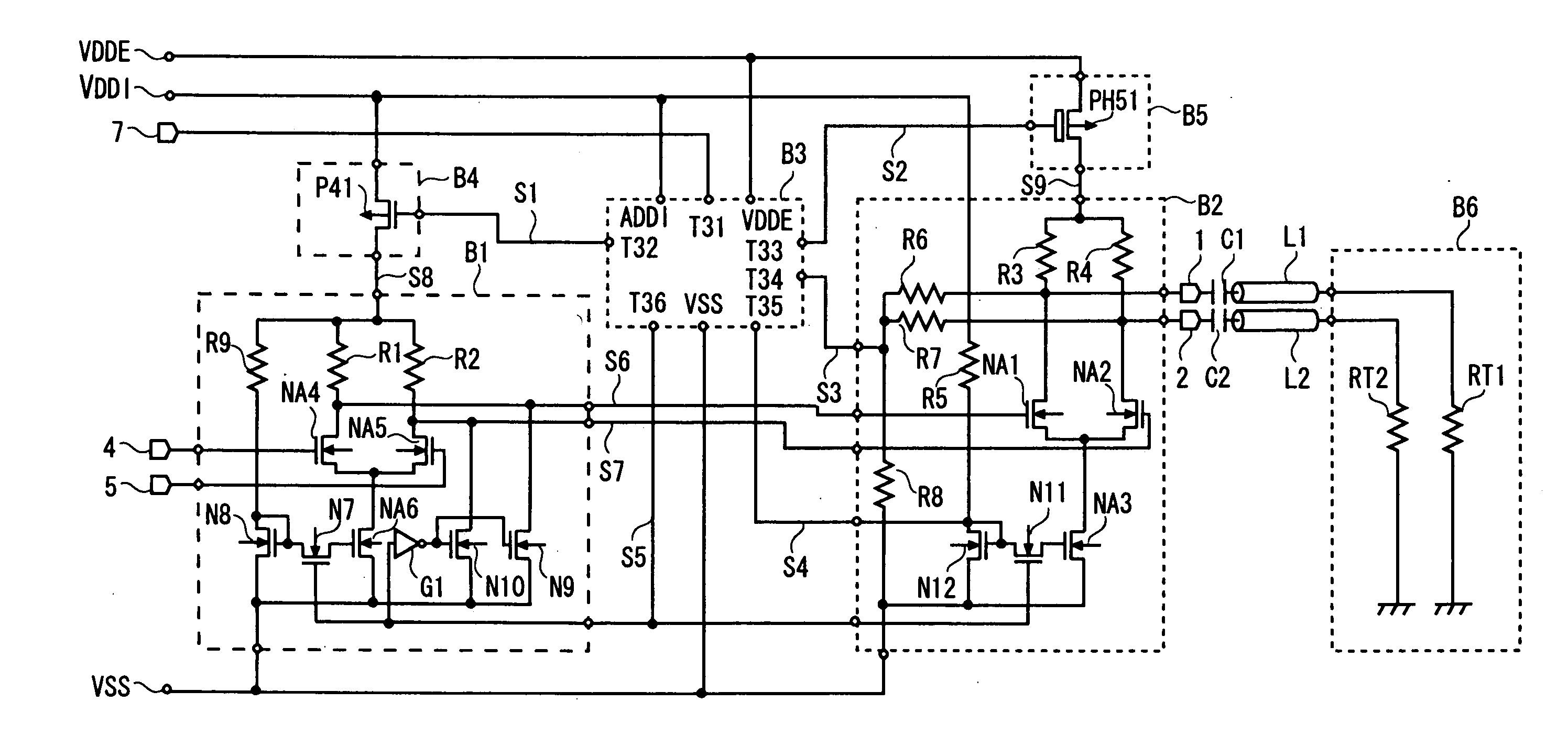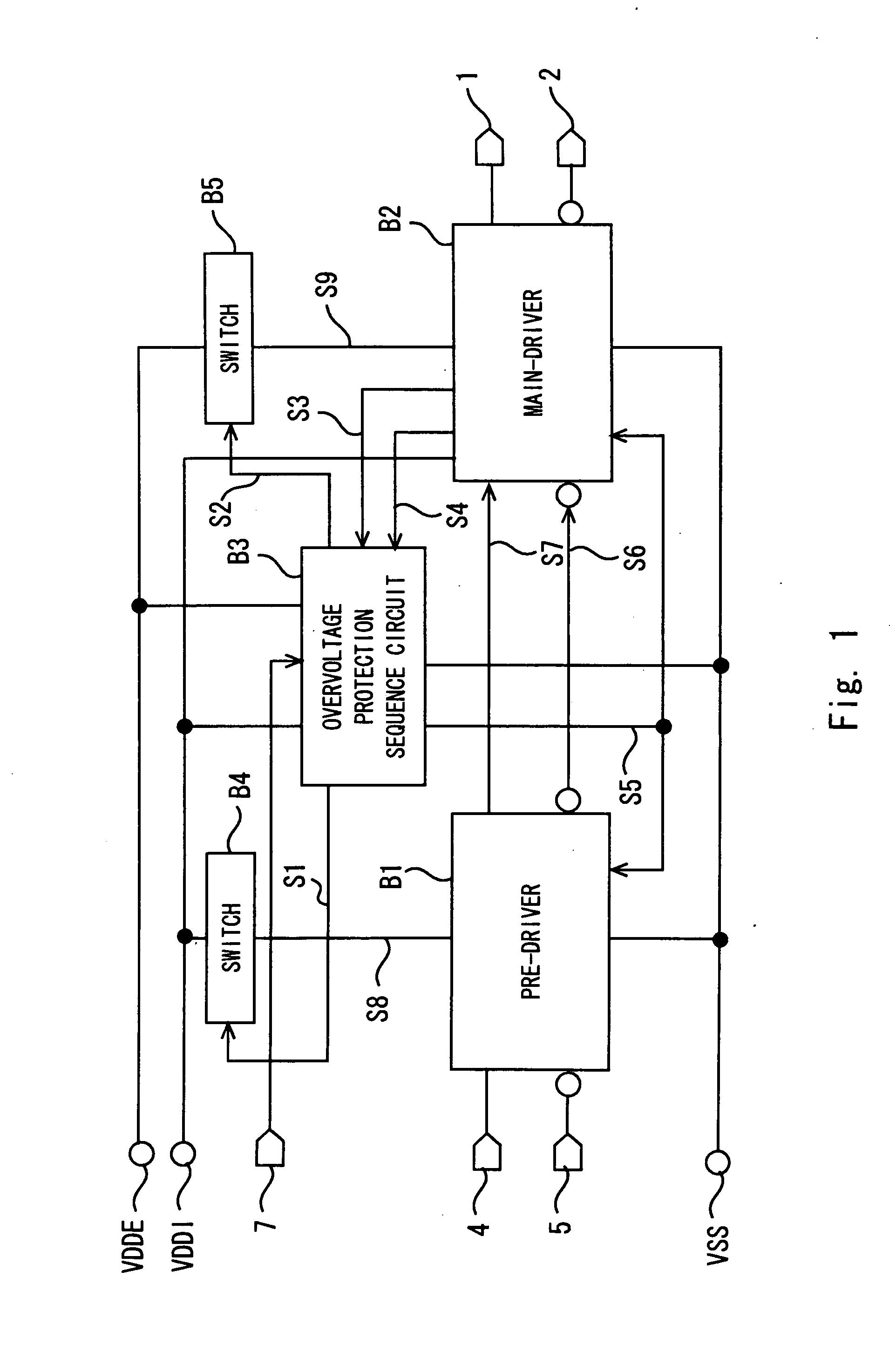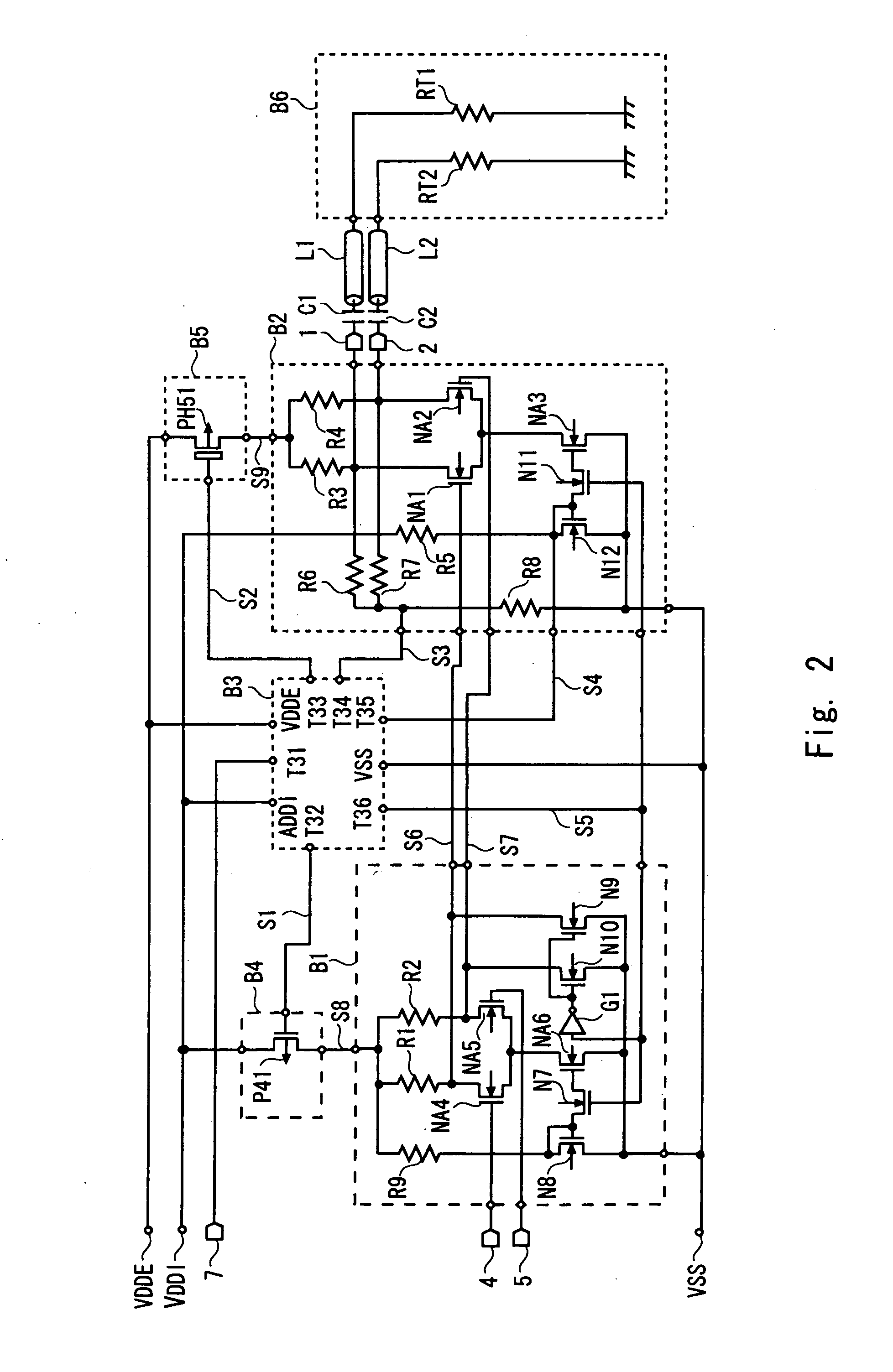Driver circuit
a technology of driver circuit and driver, which is applied in the direction of pulse manipulation, pulse technique, emergency protective arrangement for limiting excess voltage/current, etc., can solve the problems of slow operation of high-withstand-voltage transistors, inability to meet high-speed operation, and inability to operate high-withstand-voltage transistors. to achieve the effect of preventing an overvoltag
- Summary
- Abstract
- Description
- Claims
- Application Information
AI Technical Summary
Benefits of technology
Problems solved by technology
Method used
Image
Examples
first exemplary embodiment
[0047]FIG. 1 is a functional block diagram of a first exemplary embodiment in accordance with a driver circuit of the present invention. In this first exemplary embodiment, an overvoltage protection sequence circuit B3, a switch B4 and a switch B5 are added in the circuit shown in FIG. 8, which is explained as related art. Note that a pre-driver B1 and a main-driver B2 in FIG. 1 correspond to the level shift circuit and the output stage, respectively, of the related art shown in FIG. 8.
[0048]Assume that when the potential at the control input terminal 7 is a H-level, the driver circuit is in an enable mode, whereas when it is a L-level, the driver circuit is in a power-down mode.
[0049]The pre-driver B1 includes input terminals 4 and 5, and is connected to the main-driver B2 through nodes S6 and S7. A control signal supplied from the overvoltage protection sequence circuit B3 is input to the pre-driver B1 through a node S5. The power-supply terminal of the pre-driver B1 is connected ...
second exemplary embodiment
[0122]A second exemplary embodiment of the present invention is explained. FIG. 5 is a circuit diagram showing a configuration of a driver circuit in accordance with a second exemplary embodiment. With regard to the configuration of the main-driver B2 of the second exemplary embodiment, the differences from the first exemplary embodiment shown in FIG. 2 are explained.
[0123]In FIG. 5, a main-driver B2 includes a resistor R10 and low-withstand-voltage (high-speed) N-channel transistors N13 and N14 in place of the resistors R6 and R7 of the first exemplary embodiment. One terminal of the resistor R10 is connected to the node S9, which is the output of the switch B5, and the other terminal is connected to one terminal of the resistor R8 and the node S3. The other terminal of the resistor R3 is connected to the drain of the low-withstand-voltage (high-speed) N-channel transistor N13 and to the output terminal 1. The source of the low-withstand-voltage (high-speed) N-channel transistor N1...
third exemplary embodiment
[0126]A third exemplary embodiment of the present invention is explained. FIG. 6 is a circuit diagram showing a configuration of a driver circuit in accordance with a third exemplary embodiment. The configuration of the main-driver B2 is the same as that explained in the second exemplary embodiment. With regard to the configuration of the pre-driver B1 of the third exemplary embodiment, the differences from the first exemplary embodiment shown in FIG. 2 are explained.
[0127]In FIG. 6, a pre-driver B1 includes low-withstand-voltage (high-speed) P-channel transistors P1 and P2 and low-withstand-voltage (high-speed) N-channel transistors N15 and N16 in place of the resistors R1, R2 and R9 and the low-withstand-voltage (high-speed) N-channel transistors NA4 to NA6, N7 and N8. The gates of the low-withstand-voltage (high-speed) P-channel transistor P1 and the low-withstand-voltage (high-speed) N-channel transistor N15 are connected to the input terminal 4, and their drains are connected t...
PUM
 Login to View More
Login to View More Abstract
Description
Claims
Application Information
 Login to View More
Login to View More - R&D
- Intellectual Property
- Life Sciences
- Materials
- Tech Scout
- Unparalleled Data Quality
- Higher Quality Content
- 60% Fewer Hallucinations
Browse by: Latest US Patents, China's latest patents, Technical Efficacy Thesaurus, Application Domain, Technology Topic, Popular Technical Reports.
© 2025 PatSnap. All rights reserved.Legal|Privacy policy|Modern Slavery Act Transparency Statement|Sitemap|About US| Contact US: help@patsnap.com



